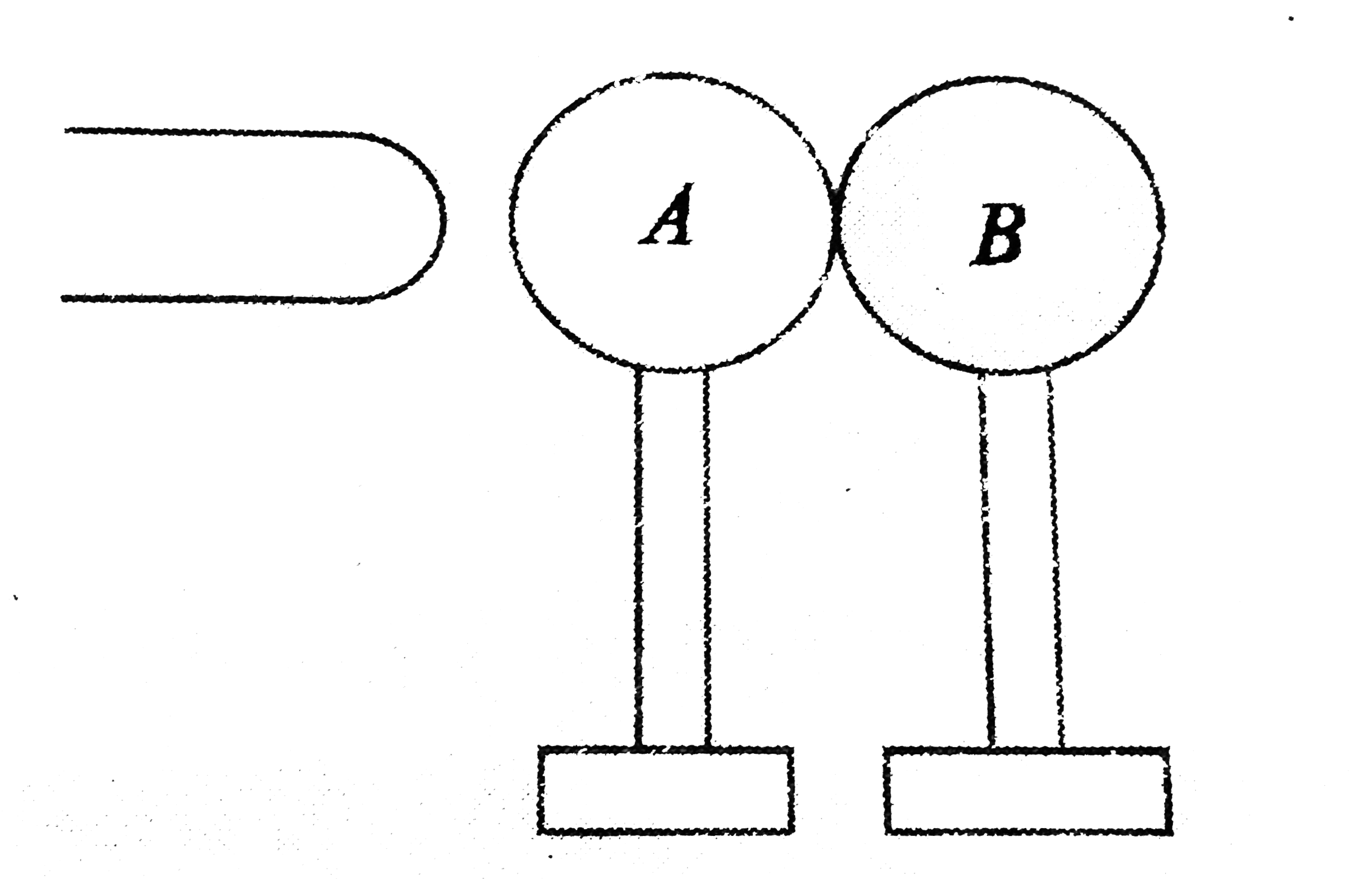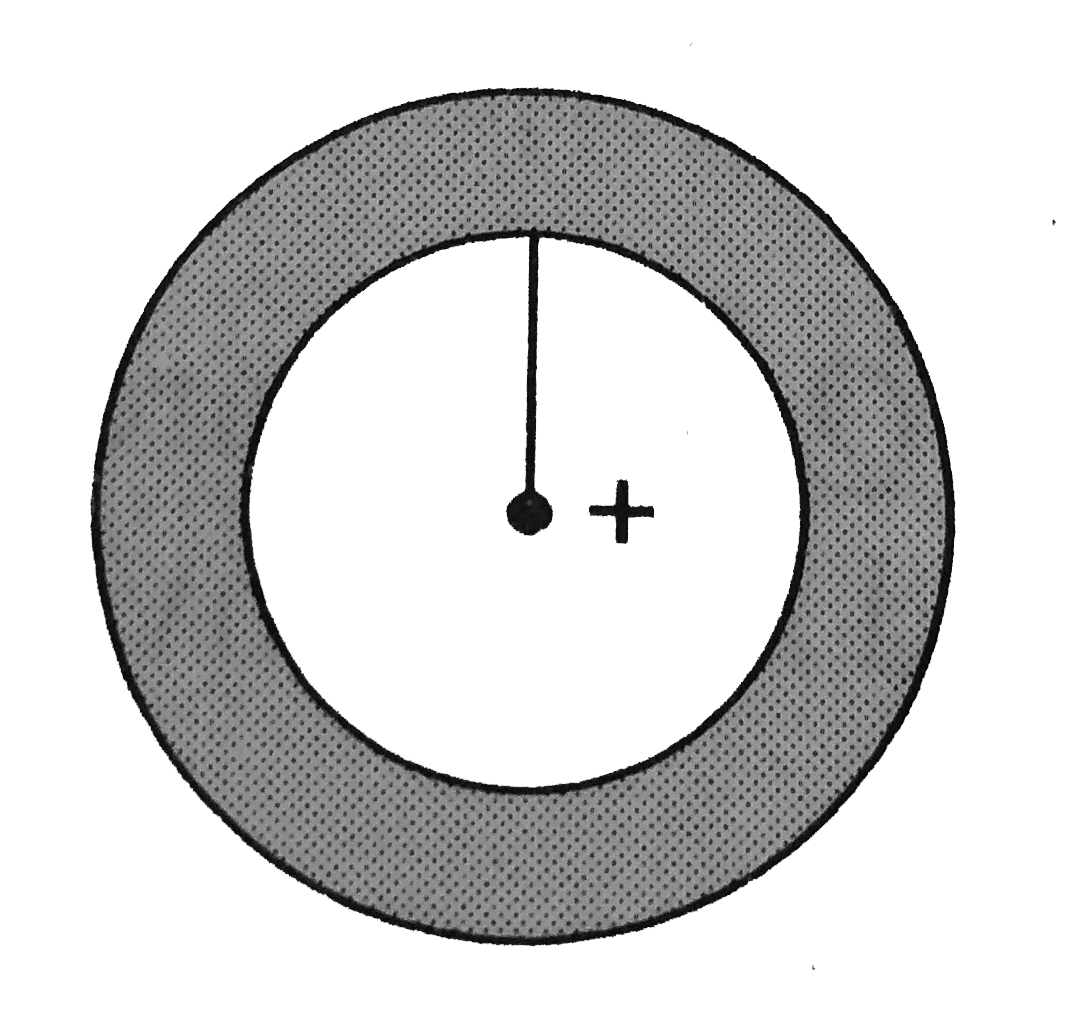Two identical metallic spheres X and Y with electrons supported on insulating stands and placed in contact. What kind of charges will be daveioped on X and Y when a negatively charged ebonite rod is brought near X?
Xwil have negative charge and Ywill have a positive charge
Ywil nave negative charge and X will have positive charge
Both X and Ywil have postive charges
Both X and Ywil have negative charges
The correct Answer is:B
To solve the problem, we need to analyze the situation step by step.
Step 1: Understanding the Setup
We have two identical metallic spheres, X and Y, which are placed in contact with each other. They are supported on insulating stands, meaning they cannot lose or gain charge from the ground.
Hint: Remember that metallic spheres can conduct electricity and redistribute charge when in contact.
Step 2: Bringing the Negatively Charged Rod Near Sphere X
When a negatively charged ebonite rod is brought near sphere X, the negative charges (electrons) in sphere X will be repelled by the negative charge of the rod.
Hint: Think about how like charges repel each other.
Step 3: Charge Redistribution
Due to the repulsion of the electrons in sphere X, some of the electrons will move away from sphere X towards sphere Y. This movement of electrons causes sphere X to become positively charged because it loses some of its negative charge.
Hint: Consider what happens to the overall charge of a sphere when it loses electrons.
Step 4: Induction Effect on Sphere Y
As electrons move from sphere X to sphere Y, sphere Y will gain those electrons and become negatively charged. Since both spheres are in contact, they share the charge until they are separated.
Hint: Remember that charge can flow between conductors when they are in contact.
Step 5: Final Charge Distribution
After the negatively charged rod is removed, sphere X will retain a positive charge, and sphere Y will retain a negative charge.
Hint: Think about how the charges will remain after the inducing charge (the rod) is taken away.
Conclusion
Thus, when a negatively charged ebonite rod is brought near sphere X, sphere X will develop a positive charge, and sphere Y will develop a negative charge.
Final Answer: Sphere X will have a positive charge and sphere Y will have a negative charge.
---
We have two identical metallic spheres, X and Y, which are placed in contact with each other. They are supported on insulating stands, meaning they cannot lose or gain charge from the ground.
When a negatively charged ebonite rod is brought near sphere X, the negative charges (electrons) in sphere X will be repelled by the negative charge of the rod.
Due to the repulsion of the electrons in sphere X, some of the electrons will move away from sphere X towards sphere Y. This movement of electrons causes sphere X to become positively charged because it loses some of its negative charge.
As electrons move from sphere X to sphere Y, sphere Y will gain those electrons and become negatively charged. Since both spheres are in contact, they share the charge until they are separated.
After the negatively charged rod is removed, sphere X will retain a positive charge, and sphere Y will retain a negative charge.
Thus, when a negatively charged ebonite rod is brought near sphere X, sphere X will develop a positive charge, and sphere Y will develop a negative charge.
Topper's Solved these Questions
Similar Questions
Two small metal spheres A and B, each of radius r and supported on insulating stands, located at a distance a(a>>r) from each other are connected by a thin conducting wire. A point charge q is brought near the spheres at distance l(l>>r) on the line joining the centers of the spheres. What are the moduli of charge induced on the spheres ?
 .
.
View SolutionFigure shows that a positively charged rod is brought near two ucharged metal spheres A and B clamped on insulated stands and palced in contact with each other.

(i) What would happen if the rod is removed before the spheres are separated?
(ii) Would the induced charges be equal in magnitude even if the spheres had different sizes or different conductors?
(iii) What will happen if the spheres are separated first and then the rod is removed far away?
View SolutionTwo identical metallic spheres of exactly equal masses are taken. One is given a poistive charge Q coulombs and the other an equal negative charge. Their masses after charging are different.
View SolutionTwo equally charged identical metal spheres X and Y repel each other with a force 5⋅10−4⋅ N another identical uncharged sphere C is touched to A and then placed at the mid-point between X and Y. Net electric force on C is
View SolutionTwo equally charged, indentical metal spheres A and B repel each other with a force F. The spheres are kept fixed with a distance r between them. A third identical, but uncharged sphere C is brought in contact with A and removed. The magnitude of the net electric force on A is
View SolutionA small conducting sphere of radius a mounted on an insulated handle and a positive charge q is inserted through a hole in the wall of a hollow conducting sphere of inner radius b and outer radius c. The hollow sphere is supported on an insulating stand and is initially uncharged. The small sphere is placed at the center of the hollow sphere. Neglect any effect of the hole. Which of the following statements will be true for this system?
View SolutionWhen a negatively charged ebonite rod is brought near a negatively charged and freely suspended ball, then the ball :
View SolutionTwo identical conduction spheres, one having an initial charge +Q and the other initially uncharged, are brought into contact.
(a) What is the new charge on each sphere?
(b) While the spheres are in contact, a positively chaged rod is moved close to one sphere, causing a redistribution of hte charges on the two spheres so the charge on hte sphere closest to the rod has a charge-Q. What is the charge to the other sphere?
View SolutionAn electrically isolated hollow (initially uncharged), conducting sphere has a small positively charged ball suspended by an insulating rod from its inside surface, see diagram

This causes the inner surface of the sphere to become negatively charged. When the ball is centred in the sphere the electric field outside the conducting spehere is
View SolutionA conducting sphere S1 of radius r is attached to an insulating handle. Another conduction sphere S2 of radius R is mounted on an insulating stand. S2 is initially uncharged. S1 is given a charge Q brought into contact with S2 and removed. S1 is recharge such that the charge on it is again Q and it is again brought into contact with S2 and removed. This procedure is repeated n times.
a. Find the electrostatic energy of S2 after n such contacts with S1.
b. What is the limiting value of this energy as n→∞ ?
View Solution